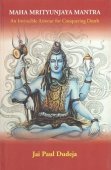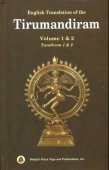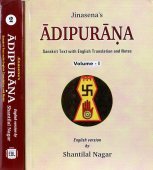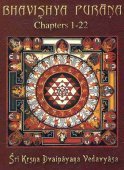Lingapurana, Liṅgapurāṇa, Linga-Purana: 10 definitions
Introduction:
Lingapurana means something in Hinduism, Sanskrit. If you want to know the exact meaning, history, etymology or English translation of this term then check out the descriptions on this page. Add your comment or reference to a book if you want to contribute to this summary article.
In Hinduism
Purana and Itihasa (epic history)
Source: archive.org: Puranic EncyclopediaLiṅgapurāṇa (लिङ्गपुराण).—See under Purāṇas.
Source: Cologne Digital Sanskrit Dictionaries: The Purana IndexLiṅgapurāṇa (लिङ्गपुराण).—One among the mahā-purāṇas; comprises 11,000 ślokas.*
- * Bhāgavata-purāṇa XII. 7. 23; 13. 6; Viṣṇu-purāṇa III. 6. 22.
Liṅgapurāṇa (लिङ्गपुराण) refers to one of the eighteen Major Puranas according to the Matsyapurāṇa and other traditional lists of Puranic literature: a category of ancient Sanskrit texts which gives a huge contribution in the development of Indian literature.—The lists of eighteen Mahāpurāṇas (e.g., liṅgapurāṇa) and eighteen Upapurāṇas are not same everywhere, as some names are dropped in some references whereas some are included in others. It can be noticed that, except the Vāyuapurāṇa and the Śivapurāṇa, the names of the Mahāpurāṇas are similar in almost all the Purāṇas.

The Purana (पुराण, purāṇas) refers to Sanskrit literature preserving ancient India’s vast cultural history, including historical legends, religious ceremonies, various arts and sciences. The eighteen mahapuranas total over 400,000 shlokas (metrical couplets) and date to at least several centuries BCE.
Dharmashastra (religious law)
Source: Shodhganga: The saurapurana - a critical study (dharma)Liṅgapurāṇa (लिङ्गपुराण) should be donated (dāna) on the fourteenth tithi of the bright fortnight in kārttika, according to the Dharmaśāstra taught in the 10th century Saurapurāṇa: one of the various Upapurāṇas depicting Śaivism.—Accordingly, the donation of the various Purāṇas to various recipients on different tithis along with the merits thereof are given in the ninth chapter.—[...] The Liṅgapurāṇa should be donated to a worshipper of Śiva on the fourteenth tithi of the bright fortnight in kārttika and by its donation, the donor becomes free from all sins and becomes united with all prosperity.
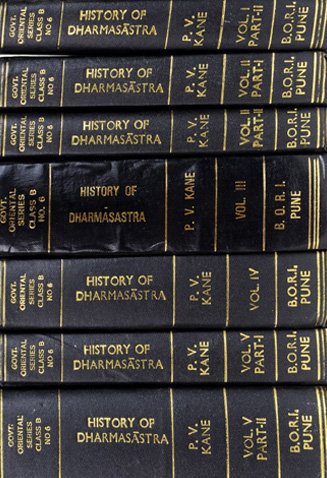
Dharmashastra (धर्मशास्त्र, dharmaśāstra) contains the instructions (shastra) regarding religious conduct of livelihood (dharma), ceremonies, jurisprudence (study of law) and more. It is categorized as smriti, an important and authoritative selection of books dealing with the Hindu lifestyle.
Languages of India and abroad
Sanskrit dictionary
Source: DDSA: The practical Sanskrit-English dictionaryLiṅgapurāṇa (लिङ्गपुराण).—Name of one of the 18 Purāṇas.
Derivable forms: liṅgapurāṇam (लिङ्गपुराणम्).
Liṅgapurāṇa is a Sanskrit compound consisting of the terms liṅga and purāṇa (पुराण).
Source: Cologne Digital Sanskrit Dictionaries: Cappeller Sanskrit-English DictionaryLiṅgapurāṇa (लिङ्गपुराण).—[neuter] T. of a Purāṇa.
Source: Cologne Digital Sanskrit Dictionaries: Aufrecht Catalogus Catalogorum1) Liṅgapurāṇa (लिङ्गपुराण) as mentioned in Aufrecht’s Catalogus Catalogorum:—[Mackenzie Collection] 39. Oxf. 44^a. Paris. (B 1 [fragmentary]). L. 1244. Khn. 32. K. 30. B. 2, 26. Report. Vi. Ben. 49. Bik. 201. Tu7b. 15. Pheh. 5. Rādh. 40. NW. 476. Oudh. Xiv, 24. Np. Ix, 20. X, 22. Burnell. 192^b. Poona. 336. Ii, 211. Taylor. 1, 153. Oppert. 107. 8224. Ii, 3261. 4910. 7730. 9982. Rice. 76. Bp. 259 (Uttarakhaṇḍa). Mentioned in Kūrmapurāṇa Oxf. 8^a, in Varāhapurāṇa Oxf. 59^a, in Revāmāhātmya Oxf. 65^a, in Devībhāgavatapurāṇa Oxf. 79^b. Bṛhalliṅgapurāṇa quoted in Brāhmaṇasarvasva. Liṅgapurāṇe Aruṇācalamāhātmya. Burnell. 192^b.
—Gaurīkalyāṇa. Burnell. 203^b.
—Pañcākṣaramāhātmya. Burnell. 192^b.
—Rāmasahasranāman. Taylor. 1, 231. Peters. 1, 118.
—Rudrākṣamāhātmya. Burnell. 192^b.
—Vāsiṣṭhalaiṅga. Burnell. 203^b.
—Sarasvatīstotra. Oudh. Xvii, 84.
2) Liṅgapurāṇa (लिङ्गपुराण):—[Bhau Dāji Memorial] 120. Bl. 33 (48 adhyāyās of the first part). Gov. Or. Libr. Madras 81. Hz. 520. Peters. 4, 14. Rgb. 124. 178. Stein 213.
—[commentary] by Gaṇeśa. [Bhau Dāji Memorial] 120.
—[commentary] Bhāvārthasaṃketa by Dayārāma, son of Sāhibrāma. Stein 213. Liṅgapurāṇe Pañcākṣaramāhātmya. L. 4209.
—Rāmasahasranāman. Oudh. Xx, 42. Stein 213.
—Śivarātrivratamāhātmya. Stein 213.
—Haritālikāvratakathā. Fl. 44. Stein 213. Weber 2155. 2156.
3) Liṅgapurāṇa (लिङ्गपुराण):—Ulwar 866.
4) Liṅgapurāṇa (लिङ्गपुराण):—Ak 236 (inc.). As p. 167 (Pūrvabhāga). 168 (Uttarabhāga). Bd. 178. Cs 4, 191. Hz. 1157. Il. Io. 925. No. 3577. 1917 ([fragmentary]). L.. 305. Liṅgapurāṇe Madhyārjunamāhātmya. Hz. 1079. Winternitz Catal. p. 243.
—Rāmasahasranāman. Io. 1301.
—Rudrakoṭimāhātmya. As p. 164.
—Śivakavacavidhi. L.. 306.
—Śivarātrimāhātmya. Peters. 6, 166.
—Śivarātrivratakathā. L.. 307.
Liṅgapurāṇa (लिङ्गपुराण):—[=liṅga-purāṇa] [from liṅga > liṅg] n. Name of one of the 18 Purāṇas (in which Śiva, supposed to be present in the Agniliṅga or great fiery Liṅga, gives an account of the creation etc. as well as of his own incarnations in opposition to those of Viṣṇu).
[Sanskrit to German]
Sanskrit, also spelled संस्कृतम् (saṃskṛtam), is an ancient language of India commonly seen as the grandmother of the Indo-European language family (even English!). Closely allied with Prakrit and Pali, Sanskrit is more exhaustive in both grammar and terms and has the most extensive collection of literature in the world, greatly surpassing its sister-languages Greek and Latin.
See also (Relevant definitions)
Partial matches: Purana, Linga, Puraana.
Starts with: Linkapuranam.
Ends with: Vasishthalingapurana.
Full-text (+93): Vishvagata, Sarvatmatva, Ramasahasranaman, Tvisha, Culin, Upamanyu, Pindika, Kojagara, Pancaksharamahatmya, Tulapurusha, Candesha, Jambukesha, Vasishthalingapurana, Linga, Citpara, Goprekshaka, Puranamahatmya, Gomayukeshvara, Nandikeshvarabhisheka, Gaurikalyana.
Relevant text
Search found 34 books and stories containing Lingapurana, Liṅgapurāṇa, Linga-purana, Liṅga-purāṇa; (plurals include: Lingapuranas, Liṅgapurāṇas, puranas, purāṇas). You can also click to the full overview containing English textual excerpts. Below are direct links for the most relevant articles:
The Religion and Philosophy of Tevaram (Thevaram) (by M. A. Dorai Rangaswamy)
Chapter 1.2 - Lingodbhava-murti (depiction of the pillar of fire) < [Volume 2 - Nampi Arurar and Mythology]
Chapter 3.3 - Kamantaka-murti (the story of Kama or Manmata) < [Volume 2 - Nampi Arurar and Mythology]
Chapter 3.8 - Brahma-shirascheda-murti (cutting off Brahma’s head) < [Volume 2 - Nampi Arurar and Mythology]
The Linga Purana (by J. L. Shastri)
Chapter 1 - Introductory < [Section 1 - Uttarabhāga]
Introduction (1): The Liṅga-purāṇa
Chapter 18 - Viṣṇu’s praise of Śiva (viṣṇustava) < [Section 1 - Uttarabhāga]
Rudra-Shiva concept (Study) (by Maumita Bhattacharjee)
5. Epithets of Rudra-Śiva tracked in the Upaniṣadic literature < [Chapter 6b - Epithets (References)]
6. Common epithets of Rudra and Śiva < [Chapter 6b - Epithets (References)]
40. Pañcabrahma incarnation < [Chapter 5 - Rudra-Śiva in the Purāṇic Literature]
Lakulisha-Pashupata (Philosophy and Practice) (by Geetika Kaw Kher)
Siva Nataraja < [Chapter 5 - The Mythological Bridge]
Iconographical Explanation < [Chapter 5 - The Mythological Bridge]
Purpose of the Study < [Introduction]
The Vishnu Purana (by Horace Hayman Wilson)
Chapter III - Measure of time, Moments of Kashthas, etc. < [Book I]
11. The Linga Purāṇa < [Preface]
12. The Varāha Purāṇa < [Preface]
Bhakti-rasamrta-sindhu (by Śrīla Rūpa Gosvāmī)
Verse 1.2.144 < [Part 2 - Devotional Service in Practice (sādhana-bhakti)]
Related products
